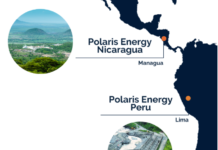Meg Cichon
 Geothermal well photo via Bigstock |
The renewable energy industry had quite a bit to celebrate this week as 2013 rang in a PTC extension that many had feared would never come to fruition. Though the extension to January 1, 2014 greatly benefits the wind industry, whose PTC was set to expire at the end of 2012, it also included a provision that could be huge for geothermal development. This provision states that projects under construction by January 1, 2014 would quality for the PTC, rather than the previous rule that required projects to be completed and operational.
A 2013 Development Boom
Karl Gawell, executive director of the Geothermal Energy Association (GEA) expects this provision to significantly boost U.S. geothermal development in 2013. He explained that under the previous provision, companies were already starting to back away from new developments for fear of not being able to finish a project and qualify in time.
This fear stems from the notoriously long project development time geothermal typically faces – an average of seven years. Therefore, geothermal faces a much earlier drop-off for the PTC than other technologies, explained Paul Thomsen, director of policy and business development at ORMAT (NYSE:ORA). Though the geothermal PTC expires at the end of 2013, most developers had lost hope of taking advantage of the incentive years ago.
“The fact of the matter is with geothermal having such a long lead time, we faced that hurdle two or three years ago because as the PTC stands now, we have to have a project constructed, online, and delivering power to the grid by Dec 31st of 2013,” said Thomsen. “In the geothermal development world that is right around the corner, so people stopped drilling projects a year or two ago because they knew they couldn’t risk missing that deadline.”
But with the new provision, Gawell believes the industry will now be scrambling to get more projects qualified in 2013.
“The Geothermal Energy Association estimates that new geothermal power projects in as many as a dozen states could be stimulated to move forward this year as a result of this change,” said Gawell in a release following the decision. “Congress’ action will spur significant new employment and sustain geothermal industry growth. Consumers and utilities will benefit, as well, because developers will have greater certainty about whether the credit will be available for their project.”
Thomsen explained that the provision is like the geothermal industry’s “fiscal cliff” – if a project can start construction and still be eligible for the tax incentive, the industry won’t fall. Projects that had previously put on the breaks can now move forward and the industry can expand and take advantage of the vast amount of resources in the U.S.
Renewable Portfolio Standard Push
While the PTC provision is a huge win for geothermal, many in the industry remain bullish on other policies and strive to set geothermal on a “level playing field” with other technologies. Thomsen said that industry advocates will continue to work with energy regulators, particularly in many Western States, to properly value geothermal energy with a focus on its inclusion in renewable portfolio standards (RPS).
Many states will soon see an increase in RPS mandates, and some, like Nevada, are starting to consider removing compliance mechanisms such as energy efficiency. These changes would create more demand for renewable energy, which is where geothermal advocates are trying to state their case: while many states have brought on wind and solar to fill the RPS, those in the geothermal industry believe that states will start to have intermittency issues. Geothermal can be brought on as a baseload power to help stabilize the grid.
“Though [other renewables] they may have gotten a leg-up on us in the past couple of years, we’re catching them. It’s like the tortoise and the hare – wind and solar raced off and created tons of projects that all delivered energy, but with no capacity,” said Thomsen. “We have been a little bit slower because we are building a project that has energy and capacity and now utilities and regulators are starting to say ‘holy cow, capacity is much more valuable to us today than energy.’”
Industry advocates will not only be fighting for a level playing field with other renewables in 2013, said Thomsen, but also for the same treatments that oil and gas companies already receive. Fossil fuels have had some of the same subsidies for more than 100 years, and they don’t expire – geothermal could take advantage of some of these provisions. For example, oil and gas can deduct their well field drilling costs from their gross revenue, explained Thomsen. There are other tax incentives that these industries get in the tax code that could benefit geothermal in reducing upfront capital costs a major hurdle to development.
“We are always going to be pushing policies that create a level playing field and give us an equitable tax position so that we can compete with any technology out there,” said Thomsen. “Give us the certainty in tax provision so we can continue to develop these projects in the future.”
Consider Global Expansion
While the U.S. geothermal industry struggles with incentives and advocating for a fair playing field, many in the industry recommend shifting some business focus overseas in 2013. Companies like TAS Energy and POWER Engineers have recently opened offices in Turkey and Africa, where development is starting to blossom at a rapid rate.
Though it may be beneficial to roll the dice overseas, Thomsen warns that the grass isn’t always greener on the other side. While there may be action in the developing world, these countries may be just as difficult to do business in as the U.S. – companies will simply face different hurdles. While the U.S. struggles with incentives, countries like Indonesia face bankability difficulties and in Kenya, companies will be bidding for projects against government-backed companies. However, Thomsen says it is never a bad idea to have an international portfolio, but to just be aware of all possible challenges.
“While we see the international market robust at the moment, we haven’t given up on the U.S. and we think the U.S. market can be just as robust,” says Thomsen. “It’s an ebb and flow as we go through the years.”
Meg Cichon is an Associate Editor at RenewableEnergyWorld.com, where she coordinates and edits feature stories, contributed articles, news stories, opinion pieces and blogs. She also researches and writes content for RenewableEnergyWorld.com and REW magazine, and manages REW.com social media. Formerly, she was an Associate Editor of ideaLaunch in Boston, MA. She holds a BA in English from the University of Massachusetts and a certificate in Professional Communications: Writing from Emerson College.
This article was first published on RenewableEnergyWorld.com, and is reprinted with permission.







